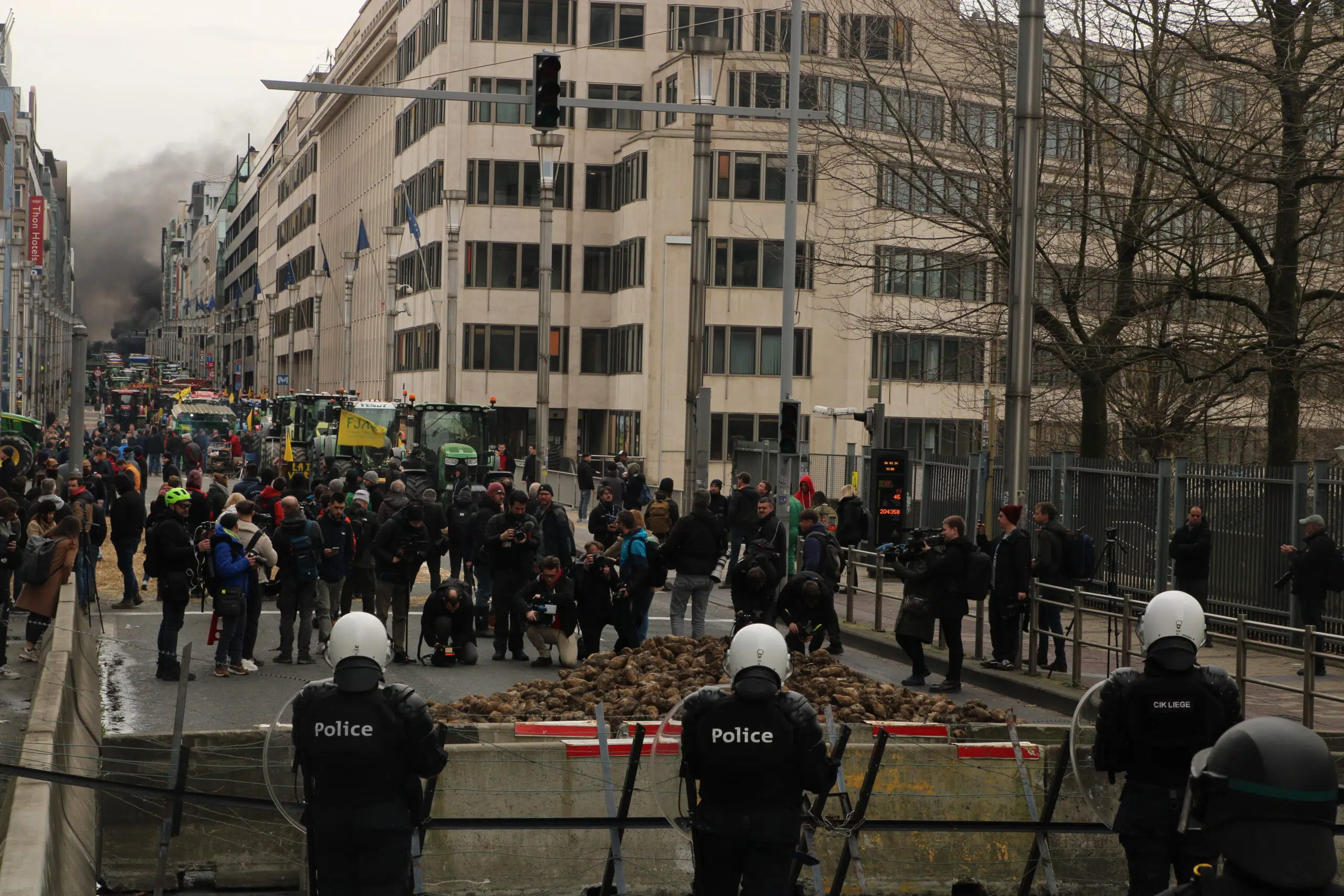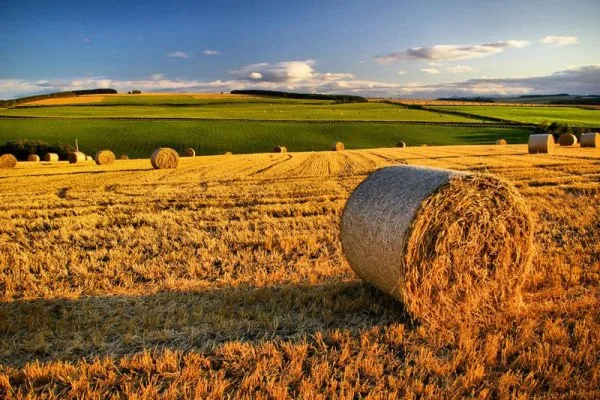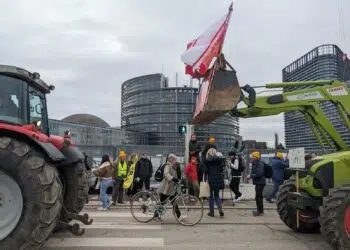Brussels – For the third time in less than two months, as the approach of EU institutions has reached the point of almost total concession to the demands of European farmers, Common Agricultural Policy (CAP) included, hundreds of tractors again invaded the streets of Brussels this morning (March 26) for the meeting of the 27 Ministers of Agriculture to protest what farmers see as penalizing policies toward the entire European agri-food sector. The first result in the Council today was the green light to the amended rules for simplification and burden reduction of the CAP, which will “increase the incomes of our farmers.”
“Farmers are demonstrating again today outside the Council. We have not forgotten them,” said Belgium’s deputy prime minister in charge of agriculture and rotating president of the EU Council, David Clarinval. Making his entrance to the Agriculture Council, the Belgian vice-premier recalled that “we are moving toward administrative simplification. We have measures that can bring more flexibility to the CAP.” The green light to the proposals submitted by the EU Commission on March 15 came from the 27 member state representatives at the Special Committee on Agriculture to “address the problems encountered in the implementation of the strategic plans” and to “ensure competitiveness for European agriculture, food sovereignty, and fair remuneration for farmers,” Clarinval added. At this point, the ball passes to the European Parliament’s Committee on Agriculture and Rural Development (AGRI) — which will use the urgency procedure — while the MEPs’ position is expected to come at the last plenary session on the agenda (April 22-25). The Regulation will then be formally adopted by the Council and published in the Official Journal of the EU: “If all goes as planned, it will enter into force by the end of the spring,” the Belgian rotating presidency of the EU Council predicts, in response to the cabinet von der Leyen requests of an expedited approval process.
Firecrackers, eggs, and manure on roads. For farmers, the changes “are insufficient.”
Brussels police counted 250 of them between Place Luxembourg, the square in front of the European Parliament, and on rue de la Loi, the artery that runs through the European Quarter and where other EU institutions are based. The tractors called to demonstrate by FUGEA, the Federation of Young Farmers (FJA), the Walloon Federation of Agriculture ( FWA), the Support Network for Peasant Agriculture (RéSAP), and the European Coordination Via Campesina (ECVC), pointed toward the European Council, where the agriculture ministers of the 27 are meeting. Blocked by the security cordon lined up by security forces around the institutions, the farmers began to burst firecrackers and set fires.

Compared to the Feb. 26 clashes and the first protest on Feb. 1, the tension, so far, has been more subdued. At least until – after unloading hay, potatoes, and manure in front of police barricades, dozens of protesters directed the throwing of eggs and firecrackers toward officers in riot gear. At that point, police fired water cannons and used tear gas to drive the farmers back. “The European Commission’s recent proposals are insufficient to address the root causes that have led farmers to protest across Europe for months,” FUGEA and Via Campesina say in a joint note.
What the CAP amendment provides
After the temporary waiver through 2024 to uncultivated land, the revised CAP plans to completely eliminate the allocation of “a minimum proportion of arable land to non-productive areas” from standard 8 of ‘Good Agricultural and Environmental Conditions’ (GAEC) – that is, fallow land- “while maintaining the protection of existing landscape elements.” Member states are instead required to “establish an eco-scheme” offering support to farmers “to maintain a portion of arable land in a non-productive state or to create new landscape elements” (such as hedges or trees). Farmers will be “specifically rewarded for these non-productive areas that are beneficial to biodiversity on farmland and rural areas, more generally.”The 27 Member States can also provide “specific exemptions” from the rules on GEAC standards 5, 6, and 7 (tillage management, ground cover, and fallow land) for situations that “are likely to be contrary to their objectives,” such as in the case of specific soil and subsoil conditions. More specifically on crop rotation (standard 7), the Commission proposes to retain it but to allow member states to “add the possibility of meeting this requirement through crop diversification,” a flexibility that should enable farmers “affected by regular drought or excessive rainfall” to meet the condition “in a way that is more compatible with agricultural realities.”
Among the most significant changes is the proposal to exempt farms under 10 hectares from cross-compliance checks and sanctions, a measure that “affects 65 percent of beneficiaries” of the CAP but “only 10 percent of the total agricultural area,” the Commission notes. “The aim is to alleviate the administrative burden related to controls, which is higher for small farms than for larger farms.” In other words — in addition to the general flexibilities on GAEC — burden relief for small farmers with a maximum farm size of no more than 10 hectares of agricultural area will ensure that they do not have to “be checked for compliance with statutory management requirements,” since the exemption “would not significantly hinder the role of cross-compliance requirements in contributing to climate and environmental objectives.” In addition, there is also the proposal to increase the number of requests for amendments to the Strategic Plan of the CAP from one to two per year: “This is necessary to deal more quickly with the changing situations of farmers, including those caused by adverse climatic events,” the Commission specifies.
The Commission will follow three paths for farmers’ remuneration and their position in the food supply chain. First, It will launch an observatory on production costs, margins, and business practices in the agri-food supply chain – with representatives of all sectors of the food supply chain, of member states, and the Commission – whose first meeting “is scheduled for the summer.” Secondly, it will propose strengthening the rules applicable to contracts that farmers enter into with the food industry or retail buyers through new options to the Regulation establishing a common organization of agricultural markets (CMO) and cross-border enforcement of rules against unfair trade practices. Finally, the Commission will conduct a “thorough evaluation” of the Directive on Unfair Trade Practices in the Food Supply Chain in force since 2021, with the first report in the spring of 2024 and a more detailed evaluation in 2025, along with legislative proposals “if appropriate.”
English version by the Translation Service of Withub









